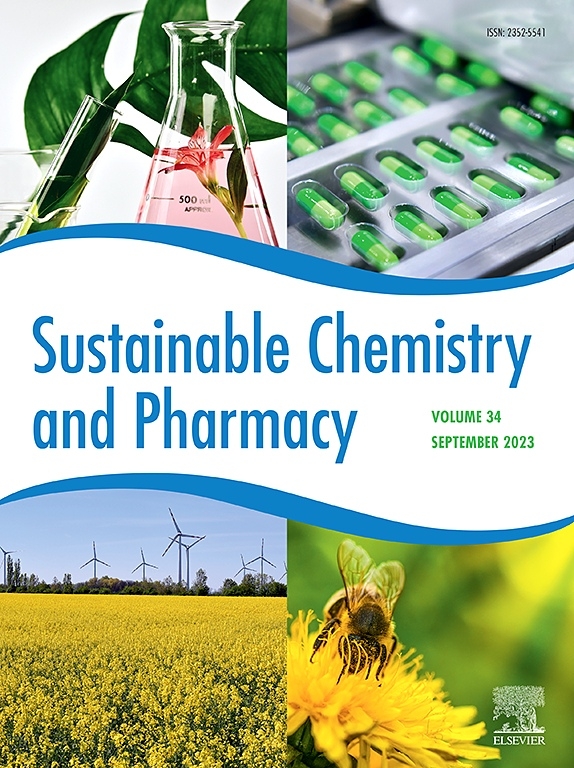Development of functional textiles with flavone dye of ginkgo biloba exocarp and study on dyeing properties
IF 5.8
2区 化学
Q2 CHEMISTRY, MULTIDISCIPLINARY
引用次数: 0
Abstract
In this study, cellulase-assisted extraction of flavonoid dye from the discarded ginkgo biloba exocarp was carried out, and the purified dye were purified by macroporous adsorption resin. The purified dye were applied to silk fiber dyeing. The optimized extraction process of dye by response surface method was as follows: enzymolysis time was 1 h; enzymolysis temperature was 45 °C; enzyme dosage was 10 mg; solid-to-liquid ratio was 1:25. Using potassium aluminum sulfate as mordant, the extracted and purified ginkgo biloba exocarp flavonoid dye was used to dye the silk fiber. The results indicate that the dyed silk fiber has a sandy beige color, and the color fastness of the dyed silk fiber met the taking requirements. The strength of the silk fibers had little change before and after dyeing, and the dyeing uniformity was good. In addition, the dyed silk fibers had good antibacterial property effects against both Staphylococcus aureus and Escherichia coli, and also obtained a certain antioxidant properties. This study not only obtained a simple, energy-saving and environmentally friendly extraction process of flavonoid dye from ginkgo biloba exocarp, but also developed a silk product with good biological function.

银杏外果黄酮染料功能性纺织品的开发及其染色性能研究
本研究以废弃银杏叶外果皮为原料,采用纤维素酶辅助提取黄酮染料,并用大孔吸附树脂对纯化后的黄酮染料进行纯化。将纯化后的染料应用于真丝纤维染色。响应面法提取染料的优化工艺为:酶解时间为1 h;酶解温度为45℃;酶用量为10 mg;固液比为1:25。以硫酸铝钾为媒染剂,用提取纯化的银杏叶外果黄酮染料对蚕丝纤维进行染色。结果表明,染色真丝纤维呈砂米色,染色真丝纤维色牢度满足取丝要求。染色前后丝纤维强度变化不大,染色均匀性好。此外,染色蚕丝纤维对金黄色葡萄球菌和大肠杆菌均有良好的抗菌效果,并具有一定的抗氧化性能。本研究不仅获得了一种简单、节能、环保的银杏外果皮类黄酮染料提取工艺,而且开发出了具有良好生物功能的蚕丝制品。
本文章由计算机程序翻译,如有差异,请以英文原文为准。
求助全文
约1分钟内获得全文
求助全文
来源期刊

Sustainable Chemistry and Pharmacy
Environmental Science-Pollution
CiteScore
8.20
自引率
6.70%
发文量
274
审稿时长
37 days
期刊介绍:
Sustainable Chemistry and Pharmacy publishes research that is related to chemistry, pharmacy and sustainability science in a forward oriented manner. It provides a unique forum for the publication of innovative research on the intersection and overlap of chemistry and pharmacy on the one hand and sustainability on the other hand. This includes contributions related to increasing sustainability of chemistry and pharmaceutical science and industries itself as well as their products in relation to the contribution of these to sustainability itself. As an interdisciplinary and transdisciplinary journal it addresses all sustainability related issues along the life cycle of chemical and pharmaceutical products form resource related topics until the end of life of products. This includes not only natural science based approaches and issues but also from humanities, social science and economics as far as they are dealing with sustainability related to chemistry and pharmacy. Sustainable Chemistry and Pharmacy aims at bridging between disciplines as well as developing and developed countries.
 求助内容:
求助内容: 应助结果提醒方式:
应助结果提醒方式:


